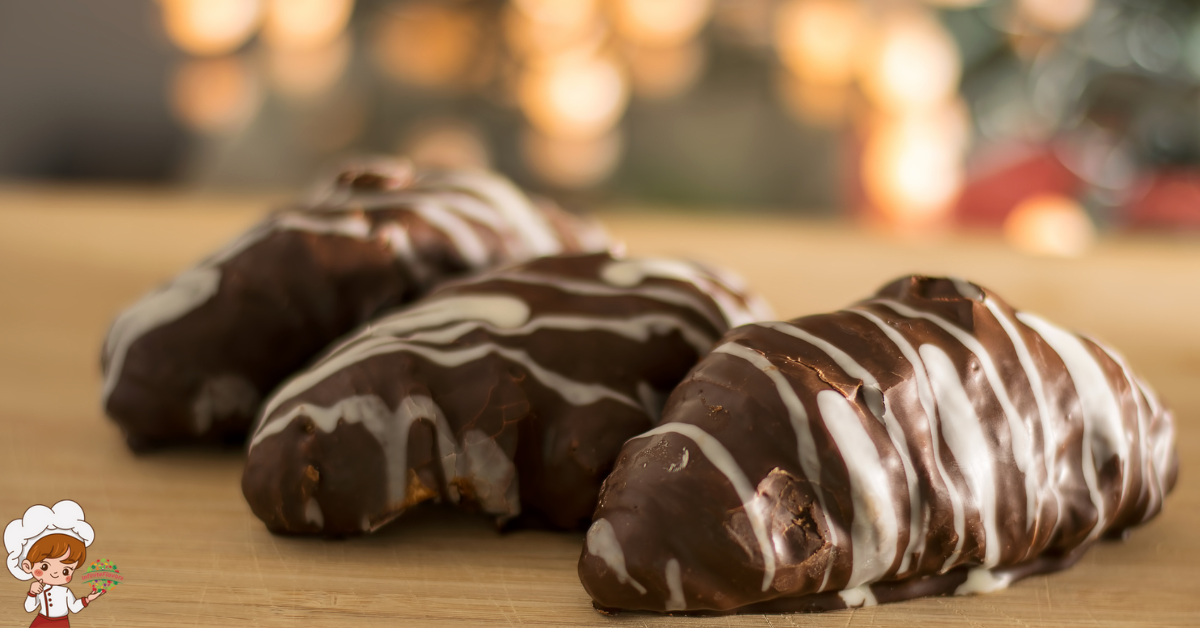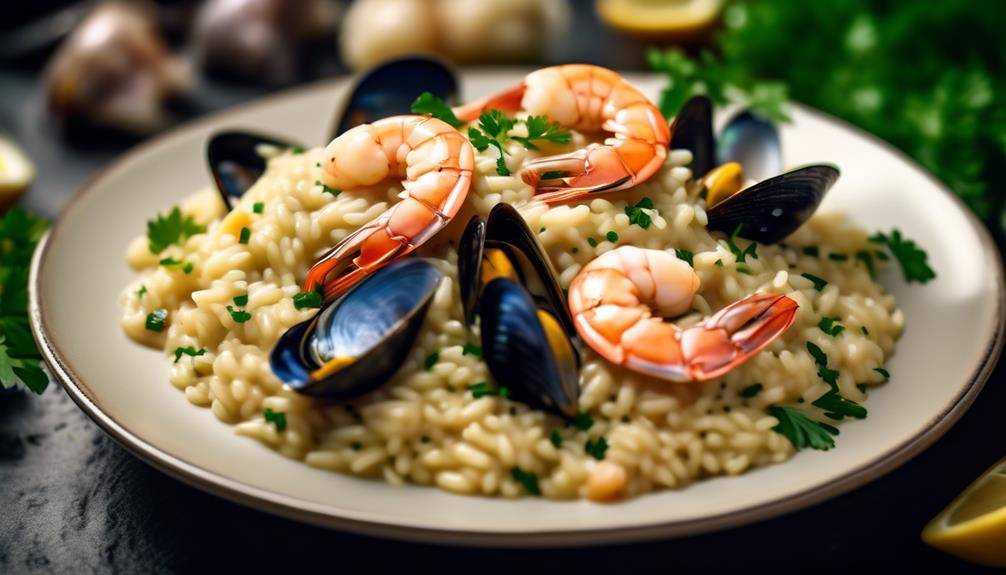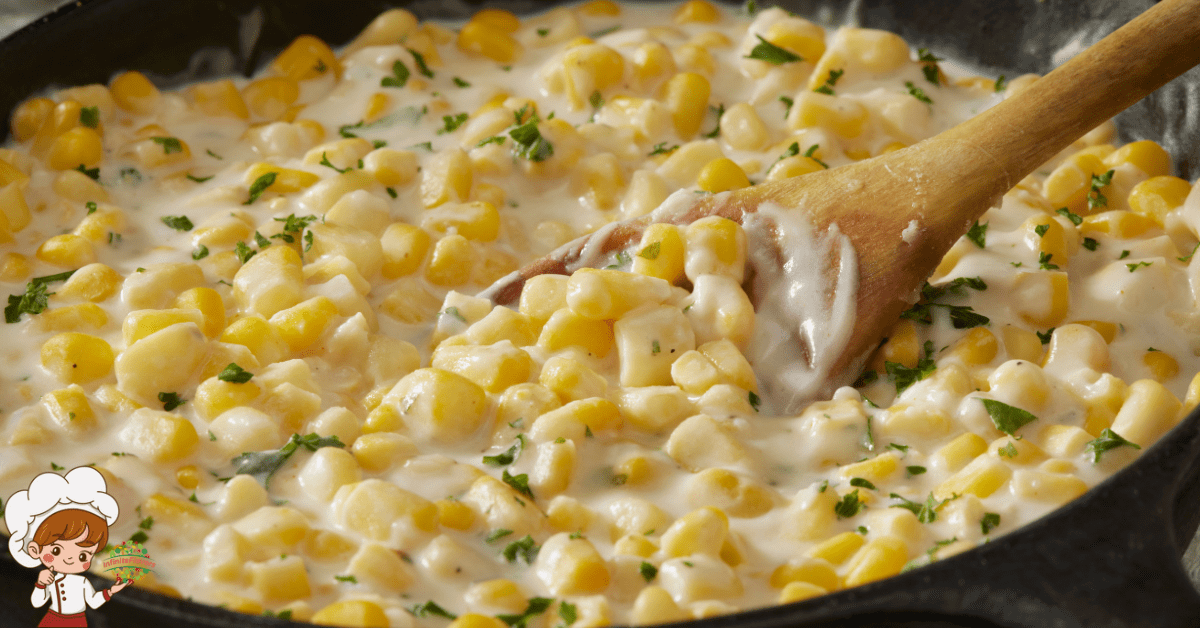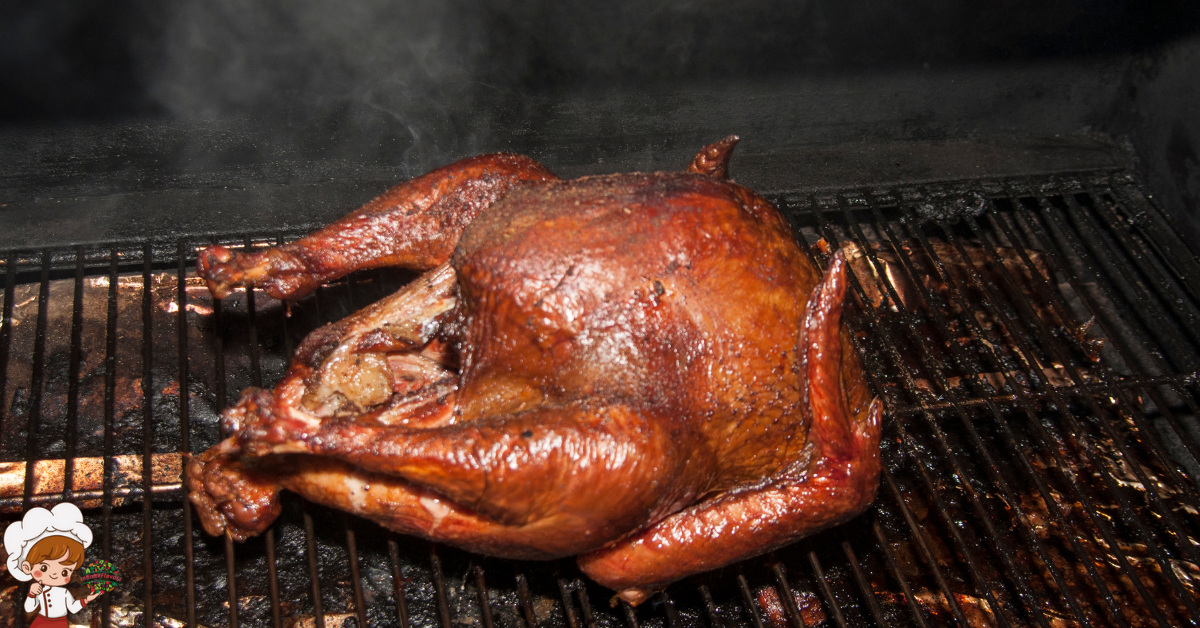Exactly How To Slow Cook Ribs
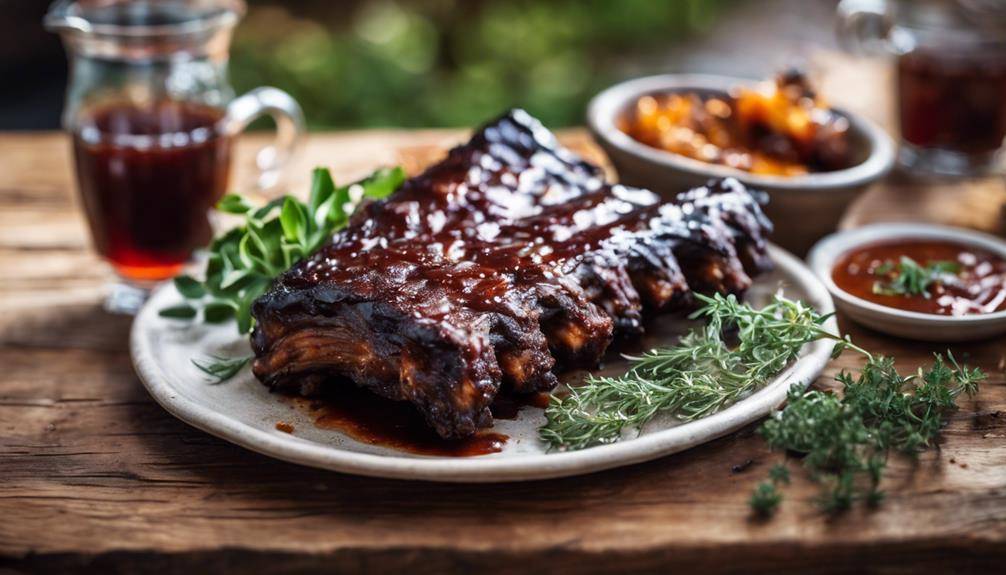
Exactly How To Slow Cook Ribs; To slow cook ribs, start by selecting the right type, like baby back or spare ribs. Trim any silver skin and marinate the ribs for a few hours or overnight. Next, season them with a flavorful rub, ensuring even coverage. Set up your slow cooker, placing the ribs in a single layer and adding any marinade or sauce. Cook on low for 6-10 hours, depending on the rib type, until the meat easily pulls away from the bone. After cooking, apply your choice of sauce and broil briefly for extra flavor. There’s more to explore about perfecting your ribs!
Choosing the Right Ribs
When it comes to choosing the right ribs for slow cooking, you’ve got a few options. The most common rib types include baby back ribs, spare ribs, and St. Louis-style ribs. Each type has its unique flavor and texture, so it’s crucial to evaluate your preferences. Baby back ribs are tender and lean, making them a popular choice for many. They’re cut from the top of the rib cage and cook quickly, which is great if you’re short on time.
Spare ribs, on the other hand, come from the lower part of the rib cage and contain more fat. This fat can enhance the flavor during slow cooking, leading to a juicier result. St. Louis-style ribs are basically spare ribs that have been trimmed to create a more uniform shape, making them easier to cook evenly.
When selecting your ribs, pay attention to the meat quality. Look for ribs with a good amount of marbling; this intramuscular fat will render during the cooking process, infusing flavor and moisture. Freshness is also key—choose ribs that have a bright color and minimal discoloration.
Ultimately, the best choice depends on your taste and the cooking method. Whether you go for the leaner baby back ribs or the more flavorful spare ribs, ensuring you pick high-quality meat will set you up for a delicious slow-cooked meal. Enjoy the process and savor the results!
Essential Slow Cooking Equipment
To slow cook ribs perfectly, you’ll need the right equipment. Consider the type of slow cooker that suits your cooking style, gather essential tools, and learn how to control the temperature effectively. With the right setup, you can guarantee your ribs turn out tender and flavorful every time.
Slow Cooker Types
Choosing the right slow cooker can greatly enhance your rib-cooking experience. Electric slow cookers are the most popular choice, offering simplicity and convenience. If you want more control over cooking times, consider programmable slow cookers; they can automatically switch to warm after the cooking time ends. Stovetop slow cookers are another option, providing versatility for those who prefer to sear their ribs directly on the stove before slow cooking.
For those wanting more functionality, multi cooker options can pressure cook, steam, and sauté in addition to slow cooking, making them a great investment. When selecting a model, keep size considerations in mind; a larger cooker might be needed for family gatherings, while a smaller one is perfect for everyday use.
Don’t forget about budget friendly models; you can find reliable slow cookers without breaking the bank. Look for brand recommendations and reviews to guarantee you’re investing in a quality appliance. Finally, energy efficiency is key—choose a slow cooker that won’t use excessive power, allowing you to enjoy tender, flavorful ribs without impacting your utility bills.
Cooking Tools Needed
You’ll need a few essential tools to guarantee your ribs come out perfectly in the slow cooker. First, choose a reliable slow cooker from the top slow cooker brands like Crock-Pot or Instant Pot. These brands offer various sizes and features, ensuring you find one that suits your cooking needs.
Next, gather some sturdy tongs. They’ll help you handle the ribs safely and easily when you’re transferring them in and out of the cooker. A good set of measuring cups and spoons is also essential for mixing your rib marinades, ensuring you get the flavors just right.
A basting brush will come in handy for applying marinades or sauces during the cooking process. This helps to keep your ribs tender and flavorful. Finally, invest in an instant-read thermometer; it’s vital for checking your ribs’ doneness without losing heat in the slow cooker.
With these tools in your arsenal, you’re set to create mouthwatering ribs that will impress everyone at the dinner table. So, gather your equipment, choose your favorite rib marinades, and let the slow cooking magic begin!
Temperature Control Tips
Achieving the perfect tenderness and flavor in slow-cooked ribs hinges on precise temperature control. To get it right, you’ll need a reliable meat thermometer. This tool is essential for checking the internal temperature of the ribs, ensuring they reach the ideal range of 190°F to 203°F.
If you’re using smoking techniques, maintain your smoker’s temperature around 225°F to 250°F. This low and slow approach allows the meat to break down, creating that fall-off-the-bone texture everyone loves. Always keep an eye on the temperature, as fluctuations can lead to uneven cooking.
When it comes to marinades options, consider using vinegar-based or oil-based marinades that not only add flavor but also help tenderize the meat. After marinating, allow your ribs to come to room temperature before cooking to promote even cooking.
Lastly, if you’re using a slow cooker, set it to low and let it work its magic for about 6 to 8 hours. With careful temperature control, you’ll be well on your way to achieving mouthwatering, tender ribs that’ll impress anyone at your next BBQ gathering.
Preparing the Ribs
Preparing the ribs is an essential step that sets the foundation for a delicious slow-cooked meal. Start by choosing the right cut of ribs—baby back or spare ribs are popular options. Next, use rib trimming techniques to guarantee even cooking. Begin by removing the silver skin, a tough membrane on the bone side. A sharp knife will help you slide beneath it. Peel it off gently, as this will enhance tenderness and allow flavors to penetrate better.
Once trimmed, consider your marinating options. A good marinade can infuse flavor and keep the meat moist during the slow cooking process. You can use a store-bought marinade or whip up a simple mix of olive oil, vinegar, garlic, and your favorite herbs and spices. Place the ribs in a resealable bag or a shallow dish, pour in the marinade, and let them soak in the refrigerator for at least a few hours—overnight is even better for maximum flavor.
Remember to turn the ribs occasionally to guarantee they soak up the marinade evenly. If you prefer, you can also dry brine the ribs by rubbing them with salt and letting them sit for an hour before cooking. This method enhances flavor and helps retain moisture. With the ribs properly trimmed and marinated, you’re ready to move on to the next steps in your slow-cooking adventure. Trust me, this preparation will make all the difference in achieving tender, flavorful ribs!
Selecting a Flavorful Rub
When it comes to selecting a flavorful rub for your ribs, you’ll want to focus on essential ingredients that enhance the meat’s natural taste. Balancing sweet and spicy elements can create a mouthwatering profile that keeps everyone coming back for more. Let’s break down what you need to create the perfect rub.
Essential Ingredients for Rub
To create a flavorful rub for your slow-cooked ribs, you’ll want to focus on a balance of spices that enhance the meat’s natural richness. Start with a base of salt and pepper, which are essential for amplifying flavors. From there, explore various spice combinations. For a classic barbecue taste, consider adding paprika for smokiness, garlic powder for depth, and onion powder for sweetness.
Don’t forget about heat! A pinch of cayenne or chili powder can elevate your rub without overwhelming it. If you enjoy herbs, dried thyme or oregano can add a fresh note.
When applying your rub techniques, be generous. Massage the rub into the ribs, ensuring every crevice is coated. This helps the flavors penetrate the meat during cooking, resulting in a beautifully seasoned dish.
You can also let your ribs marinate with the rub for a few hours or overnight. This allows the spices to meld, creating a more complex flavor. Experiment with different spice combinations until you find the perfect blend that suits your taste. Enjoy the process, and your ribs will reward you with incredible flavor!
Balancing Sweet and Spicy
Finding the right balance between sweet and spicy in your rub can elevate your slow-cooked ribs to a whole new level. Start by selecting sweet flavor profiles, like brown sugar or honey, which caramelize beautifully during cooking. These ingredients provide a rich sweetness that complements the savory meat.
Next, you’ll want to incorporate spicy ingredient combinations to create depth in your rub. Consider using smoked paprika, cayenne pepper, or chili powder for that kick. The heat from these spices balances the sweetness, making your ribs irresistibly flavorful.
When mixing your rub, aim for a ratio that suits your taste. If you prefer a bolder spice, increase the amount of cayenne or add a dash of hot sauce. Conversely, if you like things on the sweeter side, boost the brown sugar.
Don’t forget to experiment! Each cook can tweak their rub to find that perfect harmony between sweet and spicy. Once you’ve landed on your ideal blend, generously apply it to your ribs and let it marinate for a few hours or overnight for maximum flavor. Your taste buds will thank you!
Setting Up the Slow Cooker
Your slow cooker‘s setup is essential for achieving tender, flavorful ribs. Before you plunge into cooking, make certain you choose the right slow cooker type. Whether you have a traditional round or oval model, or an electronic programmable version, each type has its own advantages. An oval slow cooker is perfect for larger racks of ribs, while a round one may be better suited for smaller cuts.
Next, consider the ideal settings for your recipe. Most slow cookers come with low and high settings, and the choice depends on how much time you have. If you’re planning to be out for the day, set it to low. It’ll allow the meat to cook slowly, breaking down those tough fibers, guaranteeing a melt-in-your-mouth experience. If you’re short on time, a high setting can also work, but be aware that the ribs may not be as tender.
Also, remember to prepare your slow cooker properly. Lightly grease the insert to prevent sticking and enhance flavor. Lay the ribs in a single layer, if possible, to ensure even cooking. Add your marinade or sauce, making sure the ribs are well-coated. This helps to lock in moisture and flavor during the cooking process.
With your slow cooker set up correctly, you’re on your way to creating delicious ribs that everyone will rave about. Just remember to adjust the settings based on your cooking time, and you’ll be golden!
Cooking Time and Temperature
Getting the cooking time and temperature right is key to achieving perfectly tender ribs. When you’re slow cooking, the temperatures and times can vary based on your preferred cooking methods. Generally, you’ll want to set your slow cooker to low heat, which typically ranges from 190°F to 210°F. This low and slow approach allows the collagen in the ribs to break down, resulting in that melt-in-your-mouth texture.
For baby back ribs, aim for about 6 to 8 hours on low. If you’re using spare ribs, you might need to increase the cooking time to around 8 to 10 hours. It’s crucial to monitor the ribs as they cook. You can tell they’re done when the meat pulls away from the bone easily. Cooking temperatures play a significant role here; keeping it low guarantees the ribs don’t dry out and remain juicy.
If you’re in a pinch and need to speed things up, you can set your slow cooker to high heat, which usually ranges from 300°F to 325°F. However, this method might require you to cut down the cooking time to around 4 to 5 hours. But be cautious—cooking at higher temperatures can sometimes lead to tougher meat.
Adding Sauce and Finishing Touches
A generous amount of sauce can elevate the flavor of your slow-cooked ribs, making them even more irresistible. After your ribs have cooked to perfection, it’s time to add that delicious sauce. You can choose from various sauce variations, whether you prefer a tangy barbecue, a spicy chipotle sauce, or even a sweet honey glaze. The key is to apply the sauce generously but evenly, ensuring every bite is packed with flavor.
Once you’ve coated the ribs with your sauce of choice, you can finish them off under the broiler for a few minutes. This step caramelizes the sugars in the sauce, creating a beautiful glaze that enhances the taste and appearance of your ribs. Keep a close eye on them, as this process can go from perfect to burnt quickly.
Don’t forget the finishing garnishes! Simple touches like chopped fresh herbs, a sprinkle of sesame seeds, or thinly sliced green onions can add a burst of freshness and color to your dish. These garnishes not only look appealing but can also complement the rich flavors of the sauce you’ve chosen.
Serving and Enjoying Your Ribs
After finishing your ribs with that perfect glaze, it’s time to serve them up and enjoy the fruits of your labor. Start by presenting your ribs on a large, rustic platter; this adds a touch of charm. Consider cutting them into individual portions for easy serving. You can even stack them for a visually appealing display.
For sides pairing, think classic options like coleslaw, baked beans, or cornbread. These dishes complement the smoky flavor of the ribs beautifully. A fresh salad can also add a nice crunch and balance to the meal.
As for drink suggestions, a chilled beer or a glass of fruity sangria can elevate the experience. If you’re in the mood for something non-alcoholic, try lemonade or iced tea with a hint of mint.
When it comes to serving styles, you can go casual with finger foods or formal with plates and cutlery. Either way, be sure to have plenty of napkins on hand—ribs can get messy!
And don’t forget about enjoying leftovers! If you’ve got any, they make a fantastic addition to sandwiches or tacos. Just reheat them gently to retain their flavor.
Lastly, consider rib variations for your next cookout. Experiment with different marinades or dry rubs to keep the experience exciting. Enjoy every bite and share the joy of your slow-cooked ribs with friends and family!
Frequently Asked Questions: Exactly How To Slow Cook Ribs
Can I Use Frozen Ribs for Slow Cooking?
Yes, you can use frozen ribs for cooking. Just remember that you’ll need to adjust the cooking time, as frozen ribs take longer to become tender. Make certain they reach a safe internal temperature before serving.
How Can I Tell When the Ribs Are Done?
To tell when the ribs are done, look for rib doneness indicators like a nice bark and meat pulling back from the bones. You’ll also notice visual cues, such as tenderness when you gently twist a bone.
What Side Dishes Pair Well With Slow-Cooked Ribs?
When you’re enjoying ribs, consider serving coleslaw, baked beans, or corn on the cob. Pair them with the best barbecue sauces and perfect grilling techniques for a complete meal that’ll impress everyone at your table.
Can I Slow Cook Ribs Without a Slow Cooker?
Absolutely, you can slow cook ribs without a slow cooker. Use oven methods for even heat or grilling techniques for smoky flavor. Both options yield tender, flavorful results that’ll impress your friends at the next barbecue.
How Do I Store Leftover Slow-Cooked Ribs?
To store leftover ribs, wrap them tightly in foil or plastic wrap, then refrigerate. For reheating, consider using an oven or stovetop. These rib storage methods keep your meal delicious and ready for another round!
Conclusion
Now that you’ve mastered the art of slow cooking ribs, it’s time to dig in and enjoy your delicious creation! With the right ribs, a flavorful rub, and a little patience, you’ve transformed simple ingredients into a mouthwatering meal. Don’t forget to share your tasty results with family and friends—they’ll be begging for your secrets! So, fire up that slow cooker again and keep experimenting with flavors. Happy cooking!




